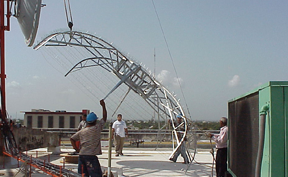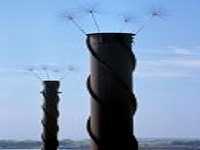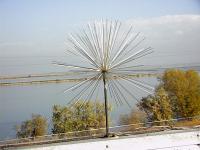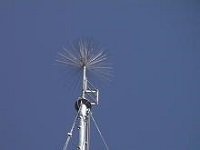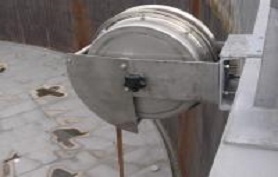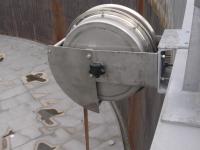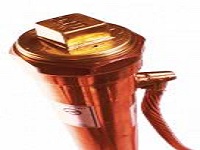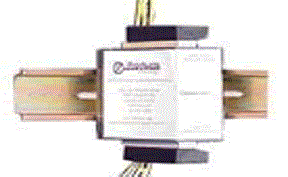
LEC
Since 1971 LEC has worked with thousands of clients around the globe,
creating engineered "isolation zones" capable of protecting large, complex facilities. Our integrated
approach to lightning, grounding, and surge suppression results in truly effective systems appropriate
for the most mission-critical and capital-intensive operations.
Industrial Grade Lightning Protection with a No-Strike Warranty
Product Line
Grounding
Traditional grounding methods can be ineffective in high stress situations like a lightning event. LEC has engineered low-impedance grounding systems that provide effective grounding that doesn’t fail when high-intensity lightning strikes. All grounding is part of LEC’s Lightning Solutions line.
Dissipation Array System - DAS

All of LEC’s Lightning Strike Prevention and Protection Systems use charge transfer
technology which continually reduces the charge so that lightning is not as likely to strike. All
lightning prevention devices are part of LEC’s Integrated Lightning Solutions that also include surge
suppression and grounding systems.
Dissipation Array® System - DAS® Provides over 99% effective strike prevention. The
Dissipation Array System is our primary charge transfer technology product. It is a fully custom
engineered system designed specifically to fit the environment of each proposed protected area. The
DAS is combined with other lightning protection devices, surge protection, and grounding solutions to
provide complete protection.
The Dissipation Array® System (DAS®) prevents lightning strikes by reducing the
local, storm-induced electric fields, interrupting the formation of upward streamers, thus preventing
lightning strikes in the protected area. Because direct strikes are prevented, many secondary effects
are eliminated as well.
With a success rate of over 99%, DAS works with grounding and surge
technologies to provide complete protection from lightning and other electrical phenomena.
Benefits of DAS
Prevents direct strikes to the protected site and the device itself.
Exceptional return on investment, saving up to 85% of maintenance, repair, fire
suppression, and replacement costs.
Reduces risk of electrical impulses (EMP) on electrical service lines or data and control lines.
Eliminates the risk of flashover on Transmission & Distribution lines.
Applications
To account for all the different structures that need lightning protection, we have designed several different DAS configurations. These configurations allow for installation on almost any structure, for virtually any industry. Each DAS expands the protected area, so a protection system can be a small as a single communications tower, or as large as busy petrochemical facility.
Common DAS Applications Include:
* Buildings of all types
* Utility Towers
* Storage Tanks
* Smoke stacks
* Offshore facilities
Spline Ball Ionizer® - SBI®
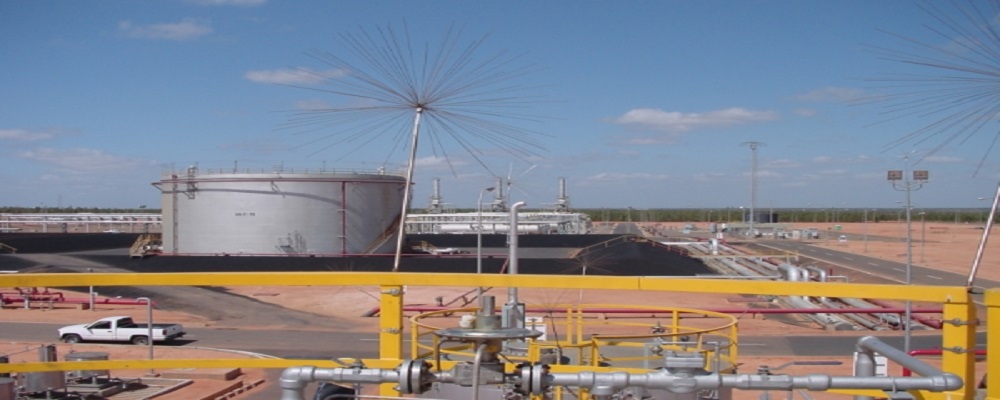
Spline Ball Ionizer® - SBI® provides 85% - 90% effective strike prevention,
all other strikes are collected. The Spline Ball Ionizer operates on the same charge transfer
technology as the DAS, however it is generally only used to enhance the protection area the DAS
provides or to protect areas the where using the DAS is uneconomical. All stainless and copper
materials are used and they are UL listed.
The Spline Ball Ionizer (SBI®) uses the same technology as the DAS®, however, the SBI has been
designed to be modular and smaller than the DAS to reduce costs. The SBI is not custom
engineered specifically for each site’s needs, so does not prevent as many direct strikes as
the DAS. However, it has also been designed to collect the remaining direct lightning strikes.
Protection with the SBI is superior to traditional lightning rods which fail about 20% of the
time.
Benefits of SBI
* Prevents most strikes (85%-90% depending on
application).
* Collects all other strikes.
* Minimizes damage potential.
* Light weight.
* Low wind profile.
* Easy to install.
* All stainless steel construction.
* UL Listed.
Common SBI Applications Include:
* Broadcast/Communications Towers
* Vessels
* Offshore Platforms
* T&D Substations
* Distribution Poles
* Uplink Dishes
* Industrial applications
Spline Ball Terminal® - SBT®

Spline Ball Terminal® - SBT® provides up to 85% effective strike prevention, all
other strikes are collected. The Spline Ball Terminal is a direct replacement for standard
lightning rods. SBTs can be retrofitted into existing lightning rod bases and used in new fully
qualified NFPA-780 and UL Master Label systems. SBTs out perform traditional lightning rods by
collecting lightning strikes more reliably. SBTs are made of all stainless steel and copper
materials and are UL listed.
The SBT prevents most lightning strikes and collects the rest of the strikes and sends them to
ground. It is UL listed as a lightning rod (air terminal) so it meets standards such as NFPA-780
and UL-96A. However, the SBT provides better lightning protection than standard lightning rods
because the SBT is based on hybrid technology that both prevents and collects strikes it.
Benefits of SBT
* Hybrid dissipation (up to 85% efficiency) and collection
technology (over 99% success rate)
* Prevents most strikes
* Collects all strikes not prevented
* Mounts in regular air terminal hardware
* Interchangeable with standard air terminals
* Usable in any NFPA-780 or UL-96A system
* Off-the-shelf product for Master Label installations
* Low wind profile and lightweight
* Installs quickly and easily
Ion Plasma Generator®- IPG®
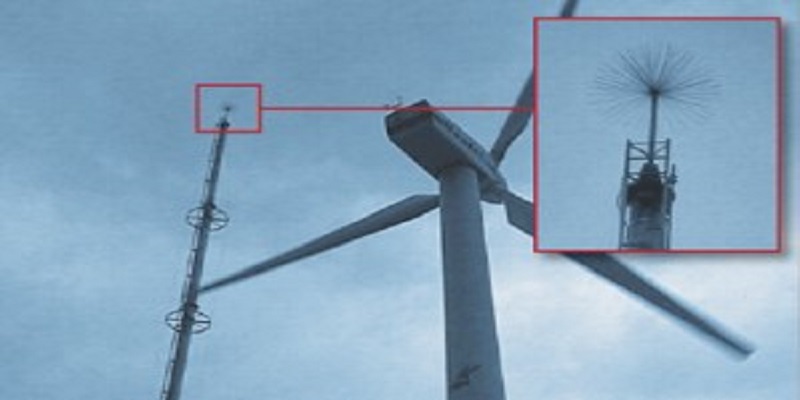
Ion Plasma Generator®- IPG® A Strike Collector that provides over 99% effective
strike collection. It is often used to protect areas that cannot have strike prevention measures
applied. It operates using the same point charge transfer technology; however it is designed to use
the charge to collect strikes rather than prevent.
Ion Plasma Generator®- IPG® is a high-efficiency strike collector for use on
facilities where strike collection is more feasible than strike prevention. The IPG’s shape,
diameter, number of points, and point spacing has been designed to optimize its ability to collect
lightning strikes so they can be effectively sent to ground.
Benefits of IPG
* Over 99% effective lightning strike collection
* Removes the risk associated with conventional strike
collectors (lightning rods)
* Highest attraction force of any air terminal (lightning
rod)
* Strong stainless steel construction
* Easy to install
* Lightweight
* Low wind profile
Technological Advantages
During a lightning storm traditional lightning rods and other air terminals fail to create a charge differential great enough to win the collection competition against other objects in the vicinity about 20% of the time. The Ion Plasma Generator or IPG reaches out and captures downward leaders, about 20 times the distance of traditional lightning rods.
Retractable Grounding Assembly

Retractable Grounding Assembly (RGA) is the most reliable low-impedance grounding
solution for floating roof tanks. The award winning RGA overcomes the problems that face most other
floating roof tank grounding systems.
LEC’s Retractable Grounding Assembly (RGA) is the most reliable product for efficiently grounding
floating roof tanks, protecting them from the dangerous effects of indirect lightning strikes. When
used in conjunction with a DAS® Rim Array, a tank will be protected from both direct and indirect
strikes.
The size of the tank determines the number of required RGAs.
Benefits of RGA
* Permanent low-impedance grounding connection prevents
the hazards from lightning and bound charge.
* Has a return on investment of about 14 months or
less
* Low initial cost and low-maintenance for the life time
of the product
* Installs quickly and easily on most floating roof tanks
(including in-service)
* Reduces the need for shunt maintenance and fire
suppression systems
CHEM-ROD
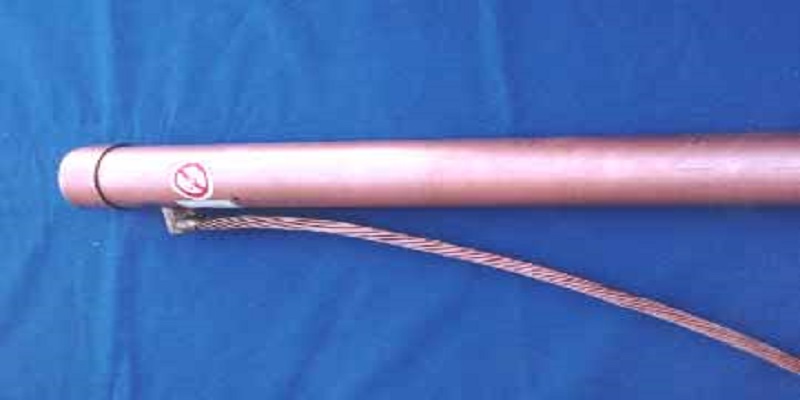
The Chem-Rod® grounding rod has the lowest impedance of any of the grounding
electrodes. Ground Augmentation Fill is one of the key components that makes the Chem-Rod so. It is
specifically mixed to condition the ground to ensure the best grounding connection possible.
The Chem-Rod® has been proven to be the best grounding (earthing) solution of all
the electrodes available. The Chem-Rods is so efficient that one Chem-Rod can replace up to ten
standard ground rods! Each Chem-Rod has been specifically engineered to provide the best,
long-lasting connection between the earth and your assets.
Grounding Options
The Chem-Rod has a larger diameter than traditional grounding rods, allowing for a better overall
connection. Also, the Chem-Rod has leach holes that allow low-resistance salts to seep out,
conditioning the ground to have the optimal electrical connection. Choose between the standard
copper Chem-Rod or the Tinned version (used in locations with cathodic protection systems);
available in vertical and horizontal configurations.
Ground Augmentation Fill - GAF
Each Chem-Rod comes standard with our special low-resistance backfill called Ground Augmentation Fill (GAF). GAF enhances the Chem-Rod’s (or even standard ground rods’) performance by providing an extraordinarily low-resistance interface of 0.5 Ohm/m, further reducing the resistance. GAF backfill is an environmentally friendly product.
Smart Ground
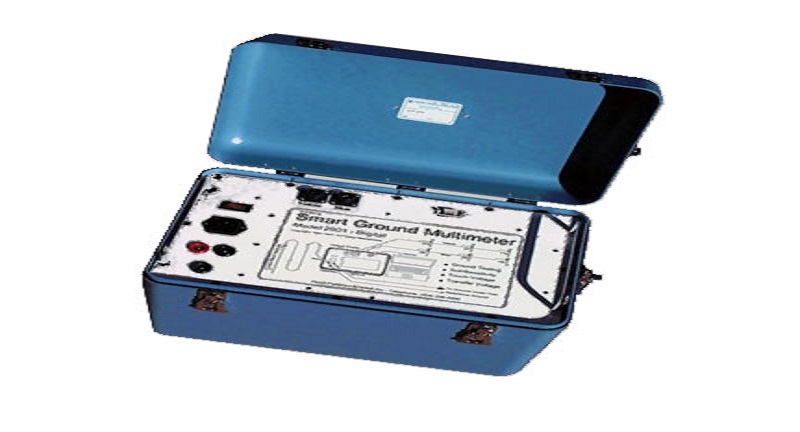
Smart Ground Meter System utilizes a new type of grounding meter that collects the
most precise information about existing grounding systems. The test evaluates your ground
effectiveness at a variety of frequencies. Smart ground is only available as a consulting service,
recommended for large facilities.
Smart Ground Testing is the most effective ground resistance testing method. It is
superior to other ground tests, because Smart Ground Testing services can find any grounding
system’s resistance, impedance, weaknesses, and offers solutions so you know what actions to take
to resolve your grounding issues.
Advantages of smart ground testing over traditional resistance test methods
* Grounding system does not have to be isolated.
* Distance to probes is not excessive.
* Compensates for background noise, EMI, stray currents,
etc.
* Generates thousands of test data points.
* Test frequency is adjustable up to 2500 Hertz, test
current up to 15 Amps.
Advantages of smart ground testing over traditional resistance test methods
* Keyspan Energy (NY utility)
* Louisiana Generating (utility)
* Sasol North America (chemical plant)
* Hitachi
* Houston P&L
* Baltimore Mass Transit Authority
* Turner Broadcasting/CNN
AC Power Protection
AC power surge suppression protects all AC power conduits including the main panel, sub panel and
individual devices. All our surge protection can resist surges from lightning or any other capturesse.
Facility Pro
The UL-listed Facility-Pro™ for AC power surge protection effectively protects where other surge
suppression devices fail. The Facility Pro is designed for your service entrance & subpanel
applications (IEEE Class C & B), with high-current handling capabilities and near instantaneous
clamping.
Benefits of the Facility Pro
* Reliably protects against lightning induced transients
* Fast clamping time and low let-through, even during
high-current impulses
* Handles currents up to 400,000 amps per phase, depending
on model
Some applications include
* Used to protect critical AC electrical service entrances
and other services
* heavy industrial, process plants
* TV & radio broadcast sites
* commercial, data centers
* 911 centers, schools, hospitals, public works facilities
* and any sites requiring fail-safe protection
DC Power
DC power surge suppression is commonly used to protect battery systems, DC power supplies, and
cathodic protection systems.
SP VDC Surge Protector For DC Applications
The SP VDC device provides absolute protection for DC equipment. The SP VDC protects against both
the high-energy, fast-rising transients and the slower high energy impulses. It uses the same MOV
technology the Sandwich block uses, so it can take any surge large or small. The SP VDC is designed
for heavy duty applications for low voltage DC options see the DLP listings.
Low Voltage
Modern companies are relying more and more on sensitive technology for vital processes. Downtime for any reason is becoming increasingly unacceptable. The low voltage line ensures virtually every sensitive device on your facility has the protection it needs. All low voltage products are part of Integrated Lightning and Surge Suppression Solutions from LEC.
Data & Signal Line Protection
- Data Line
- Protects a variety of data lines and devices (including DC).
- Coaxial Line
- Protects all coaxial devices such as TV antennae.
Data Line Protectors
DLP Product Family Overview
The Data Line Protector (DLP) product family includes several different types of DLPs. Every DLP
has a series hybrid protection circuit, which includes protection components both in series and
parallel. Every DLP has a surge capacity of 10,000 amps per wire and a very fast response time.
Every DLP is available in one of ten different clamping voltages, to match customer requirements.
With the exception of the DIN-8 products, all DLPs are manufactured as individual modules. Multiple
modules can then be stacked together to match the number of wires needing protection.
Available Products
1. DLP-MSBThe DLP-MSB is a surge protector used to protect high data rate and digital circuits. Each DLP-MSB protects one wire and has a single screw termination.
2. DLP-LMSB
The DLP-LMSB is a surge protector used to protect current loop, analog, low frequency and DC
circuits with a normal operating current less than 500 milliamps. Each DLP-LMSB protects one wire
and has a single screw termination.
The DLP-L2MSB is a surge protector used to protect current loop, analog, low frequency and DC circuits with a normal operating current less than 2 amps. Each DLP-L2MSB protects one wire and has a single screw termination.
4. DLP-MHB
The DLP-MHB is a surge protector used to protect high data rate and digital circuits. Each DLP-MHB protects two wires and has a double screw termination.
5. DLP-LMHB
The DLP-LMHB is a surge protector used to protect current loop, analog, low frequency and DC
circuits. Each DLP-LMHB protects two wires and has a double screw termination.
The DLP-MPB is a surge protector used to protect telephone and communication circuits. Each DLP-MPB protects two wires and has a double punchblock termination.
7. DLP-DIN-8
The DLP-DIN-8 is a din rail mounted surge protector used to protect high data rate and digital circuits. Each DLP-DIN-8 protects 8 wires and has snap-in, barrier strip terminations.
8. DLP-LDIN-8
The DLP-LDIN-8 is a din rail mounted surge protector used to protect current loop, analog, low
frequency and DC circuits. Each DLP-LDIN-8 protects 8 wires and has snap-in, barrier strip
terminations.
For data, telecommunication, and LAN lines.
Coaxial Line Protector
About CLP Surge Protection
The Coaxial Line Protector (CLP) is the first line of defense for your sensitive high-frequency
coaxial equipment from lightning surges and electrical transients for your sensitive equipment.
Lightning Protection Applications
The CLP series coaxial surge protectors have been designed to protect the following devices and
technology:
* TV and Radio Antennas
* microwaves
* broadband applications
* two-way radios
* cellular equipment
* GPS equipment
